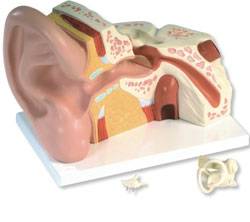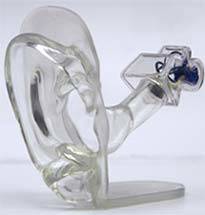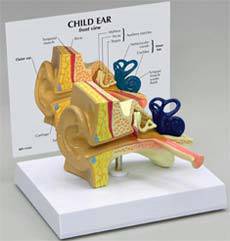Home » Hospital & Durable Medical Equipment » Using a 3D Anatomy Ear Model in the Science Classroom » Using a 3D Anatomy Ear Model in the Science Classroom
Using a 3D Anatomy Ear Model in the Science Classroom

5 Times Life Size Human Ear Model
Retail Price: $625.40
Your Price: $518.07
 Unit: single
Unit: single
Students of any age learn more effectively when there are a variety of ways to take in the information provided through a class or lecture. Traditional classrooms, even at the college level, often have students who lose focus and interest. Adding some really unique 3D anatomy ear model styles to your teaching can make a basic lesson more fun and interesting.
One type of 3D anatomy ear model that is a must for any teaching hall or laboratory is the basic adult ear. This model shows the external ear, a cross section of the tissue and skull through the ear canal and into the middle and inner ear. In highly detailed models, the semi-circular canals, cochlea, ossicles, tympanic membrane and the corresponding tympani and temporal muscles.
This 3D anatomy ear model is perfect for accompany small group lectures or to allow students to study and review on their own. The added card that goes behind the model is handy to identify the various features. In addition the card also clearly divides the outer and inner ear as well the muscle groups. Using this in conjunction with a textbook or ear anatomy chart allows students to see everything in life size and in 3D relationship to each other.
For more advanced comparative anatomy, a 3D anatomy ear model of a child's ear is a perfect additional component to classroom equipment. This type of ear is actually larger than life by about a half, ensuring that all features are easy to see and identify. The child's ear model should show the common diseases and conditions of the ear common in early development. These usually include inflammation and fluid build up in the middle ear as well as the more horizontal eustachian tube common seen in children.
Using the two models side by side is an excellent way for students to see minor differences and also to help highlight the similarities in a child and adult ear. With the accompanying cards behind the models is it very simple for students to compare the two models in small group or individual work. A 3D anatomy ear model will sit on a standard base that is 6 ½ inches by 5 inches by 1 inch, a very convenient size for storage on side counters and workstations in a lab.
One of the most unique types of a 3D anatomy ear model is the clear ear model. This shows the actual ear in clear plastic exactly how it would be positioned in relationship to the outside of the head. The outer ear is shaped and so is the middle and inner ear. The stapes, incus, malleus and cochlea of the inner ear are clearly visible as is the tympanic membrane. The position and shape of the ear canal is very accurate, making this a valuable teaching tool to students. All the 3D anatomy ear model options can also be used directly with patients. Having the anatomical models in an office or examination room can really help explain hearing loss and ear diseases with the patient in simple, easy to understand ways.
MSEC remains dedicated to providing the very best and the very latest in medical supplies and equipment. We never cease to be on the lookout for the latest innovation that will benefit both our many clients and the patients they dedicate their lives to caring for. If you have any difficulty finding your choices in our vast inventory, call our customer service at 1-877-706-4480 to speed up your order or to make a special request. We are always happy to help you.
















